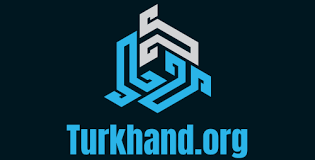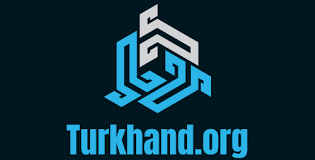In the competitive landscape of branded apparel and promotional products, the difference between an amateur-looking patch and a professional, durable emblem often comes down to a single, critical factor: the quality of the digital file that guides the embroidery machine. For businesses seeking reliability, quality, and clear communication, partnering with expert custom embroidery digitizing services and digitizing companies in USA is the most strategic decision they can make. These specialized providers are not merely file converters; they are the essential architects of your stitched brand identity. They translate your two-dimensional logos and artwork into a complex language of stitches, ensuring that the final product is not only visually accurate but also structurally sound and optimized for production. Understanding the value these partners bring and knowing how to select the right one is fundamental to achieving embroidery that enhances your brand's reputation and stands the test of time.
The core function of any custom embroidery digitizing services and digitizing companies in USA is to transform your artwork into a digital embroidery file, such as .DST, .PES, or .EXP. However, the critical distinction lies in the word "custom." This signifies a manual, expert-driven process, a world apart from the automated, one-size-fits-all approach of online auto-digitizers. When you provide a logo—ideally in a vector format like .AI or .EPS—a skilled digitizer analyzes it not as a flat image, but as a structure to be engineered from the ground up. They use specialized software to manually create a detailed set of instructions, a true blueprint that dictates every needle plunge, thread type, stitch direction, and color sequence. This human touch is what allows for the nuanced decisions that separate a generic file from a perfected one, tailored specifically to your project's needs.
A professional digitizer working for a reputable company makes hundreds of strategic decisions to ensure your design stitches out flawlessly. One of the most crucial is the creation and placement of the underlay. Think of underlay as the foundation of a building; it is a series of stitches sewn before the top stitching that remains largely invisible in the final product. Its functions, however, are vital. It stabilizes the fabric to prevent the puckering and shifting that can ruin a design, creates a smooth base for the top stitches to lie upon for a superior finish, and can push down the nap of fabrics like fleece to ensure crisp, clean edges. Automated digitizers often neglect this step, which is a primary reason for their consistent failures.
Another essential technique applied by experts is pull compensation. Embroidery is a physical process where the tension of the needle and thread pulls on the fabric. This force can distort the design, causing circles to become ovals and straight lines to curve. A skilled digitizer anticipates this phenomenon and digitally pre-distorts the design in the opposite direction. This ensures your logo stitches out true to its original proportions and geometry, preserving the integrity of your brand's visual identity. Furthermore, a professional makes intelligent choices about stitch types, selecting glossy satin stitches for text and borders and sturdy fill stitches for larger areas. They also map out an efficient sewing sequence to minimize thread trims and machine jumps, which saves production time, reduces thread usage, and results in a cleaner back of the design.
The business case for investing in professional custom embroidery digitizing services and digitizing companies in USA is compelling and directly impacts your bottom line. First and foremost is the assurance of quality. A professionally digitized design is crisp, clean, and durable. It will withstand repeated washing and wear without fraying or falling apart, ensuring that your branded apparel maintains a professional appearance for its entire lifespan. This directly enhances your brand's image, as the quality of your merchandise is a direct reflection of your company's attention to detail. Secondly, a well-digitized file is incredibly efficient. It runs smoothly on embroidery machines, leading to fewer thread breaks, needle breaks, and misalignments. This reduces operator intervention, minimizes machine downtime, and prevents the waste of valuable materials like thread, backing, and garments. For an embroidery business, this efficiency translates directly into higher profitability and the ability to confidently take on more orders.
When seeking out custom embroidery digitizing services and digitizing companies in USA, it is important to be a discerning customer. The market contains a range of providers, from individual freelancers to established firms. Look for a service with a robust and diverse portfolio that demonstrates experience with a variety of design styles and complexities. Clear communication is also a key indicator of a quality provider. A reputable company will proactively ask for details such as the type of garment you are using, the desired finished size, and any specific requests you may have. They should act as a partner in your success, not just a remote vendor processing orders.
Additionally, look for a service that offers a satisfaction guarantee or a clear revision policy. Even the best digitizers may require a minor adjustment after a test sew, and a company that stands behind its work will typically offer one round of revisions to ensure the file is perfect for your specific application. The process should also be user-friendly, with a secure website for uploading artwork and specifying requirements. A quick and reliable turnaround time, typically between 24 to 48 hours, is standard for professional services and is a mark of their efficiency and capacity.
To get the best results from your chosen custom embroidery digitizing services and digitizing companies in USA, your role as the client is crucial. It begins with providing the highest quality artwork possible. Vector files are ideal, but if you only have a raster file like a JPG or PNG, ensure it is high-resolution and clear. Blurry or pixelated logos will inevitably result in a poor-quality embroidery file. Clearly communicate all specifications, including the garment type and exact dimensions. Be prepared to answer questions from your digitizer, as this collaboration is key to a perfect outcome. Most importantly, always stitch a test sample on a similar piece of scrap fabric before running the final file on your production garments. This simple step is the most effective way to catch and correct any potential issues, saving you from costly mistakes and material waste.
In conclusion, professional custom embroidery digitizing services and digitizing companies in USA are the indispensable foundation of high-quality embroidered products. They provide the expert craftsmanship and technical precision required to translate a digital logo into a durable and beautiful stitched emblem. By understanding the value of this specialized craft and choosing a reputable provider based on their portfolio, communication, and policies, you invest in the quality of your brand, the efficiency of your production, and the satisfaction of your customers. In the competitive world of custom apparel, a professionally digitized design is not just a file—it is the thread that weaves together creativity, quality, and commercial success, ensuring your brand is represented with the excellence it deserves.



